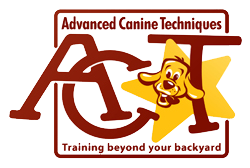If I had a nickel for every client that said my dog does great at home, but he goes crazy and doesn’t listen to anything I say in public, I would be a very rich woman.
I believe group classes help with this… IF OWNERS ARE DOING THEIR HOMEWORK EVERYDAY! The more your dog learns the commands and uses muscle memory to follow through each time you ask, distractions won’t be an issue. This applies to commands as well as bad behaviors. If you have used a meaningful correction to address a problem, your dog will utilize muscle memory in new locations.
I took an online Koehler course last summer and it was great. I had to submit videos each week to move onto the next section. Rusty and I really got into a groove. That method required you do a minimum of 25 reps of each command throughout the day. And the best part of the training was allowing the dog to rest for one hour before and one hour after the training session. It really helped proof the commands with distractions.
When you practice at home, are you adding in distractions – company, door knocking, soundtracks of noises (barking dogs, sirens, machinery, traffic, etc), working in different rooms, indoors and outdoors, when people are walking past the house or in the yard, etc. Are you fading out the food? Are you using hand signals and/or verbal commands? Are you following through if your dog doesn’t follow your commands? Are you continually repeating the commands?
AND, this is the big one – are you relevant to your dog? Are you controlling resources (food, water, toys, space, attention, etc?) If not, begin doing this immediately. Once your dog begins to pay attention to you and get rewarded for everything they NEED, you will get much better results. It is not mean-it is responsible dog training. Stop talking, stop petting – use your body to communicate with your dog.
I encourage you to have someone videotape you working with your dog. You will be amazed at what you may change after watching yourself. How many times do you repeat the command? How is your timing? Is your body language clear? Can you see when the dog might need help or clarification? How can you help your dog to understand the command better?
I love the exercise where you spend 24-48 hours not talking to your dog. Using hand signals and body language, communicate to your dog what your expectations are. You will be amazed at how effective special pressure and leash pressure are to your dog.
There are many places in the community to practice with your dog. Empty Parking lots, parks, college campuses, farmers markets, vet parking lots, pet store parking lots, pet stores. The only way your dog will get better is to take them there to practice a few times a week or daily. Many times, clients are too afraid to take their dog in public to practice but then the dog will never learn.
Remember, if you are only working with your dog in your home, your dog won’t learn how to behave in public. You have to teach them what to do. It takes time, it takes patience, it takes consistency, it takes praise, it takes work. Training is work! The goal is to find a way to make the work FUN! If you aren’t enjoying it, you won’t do it and then your dog won’t enjoy it either.
Your challenges for July are 1) to have someone video tape you once a week for 4 weeks working on different commands and compare the results after critiquing your video. Feel free to send it to me and I am happy to provide you feedback as well. 2) Take your dog someplace new 3 times this month and work for 5-10 minutes and then leave. Share your feedback with us.
Happy Training and Happy 4th of July!

